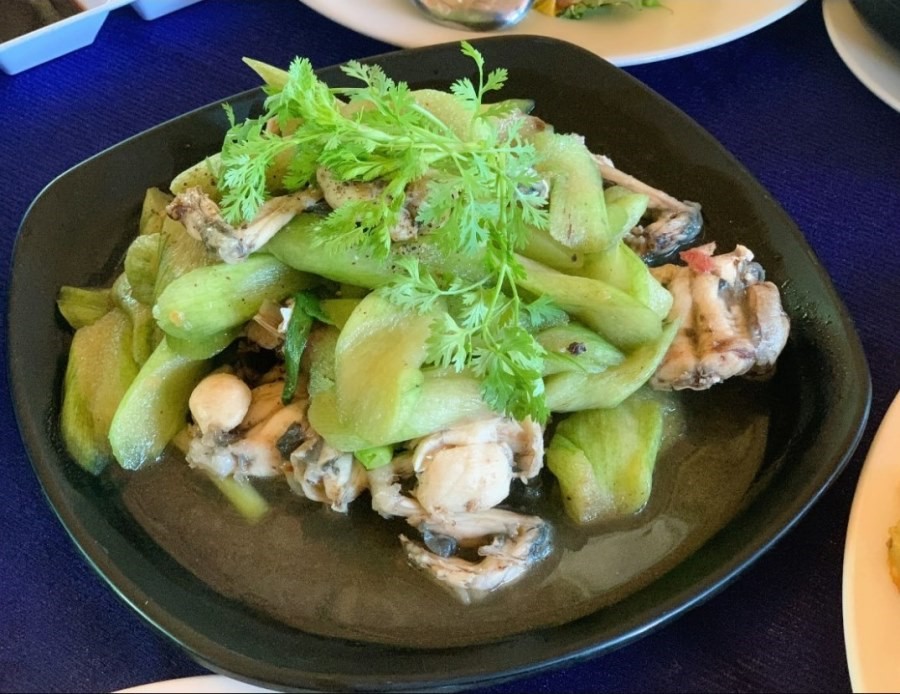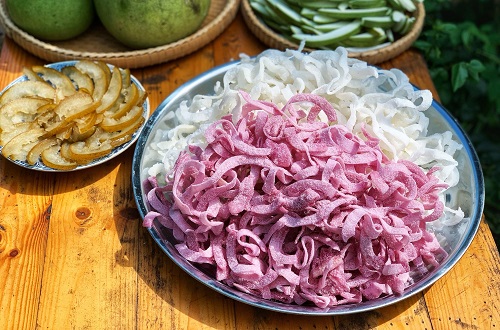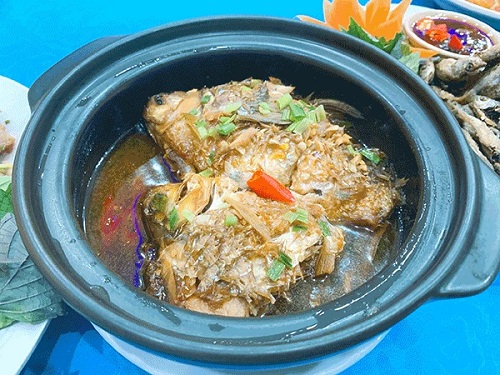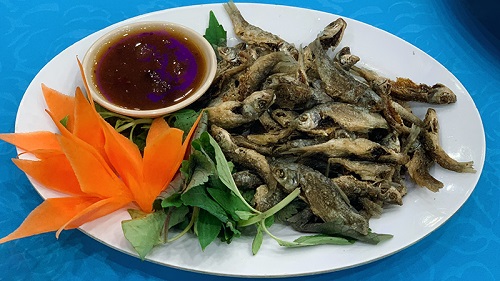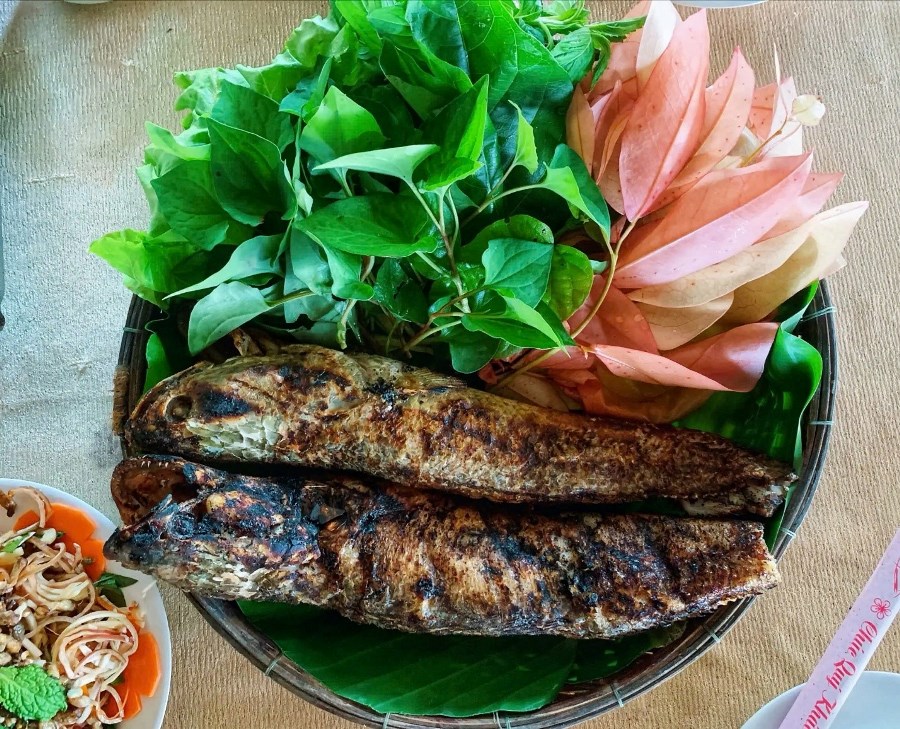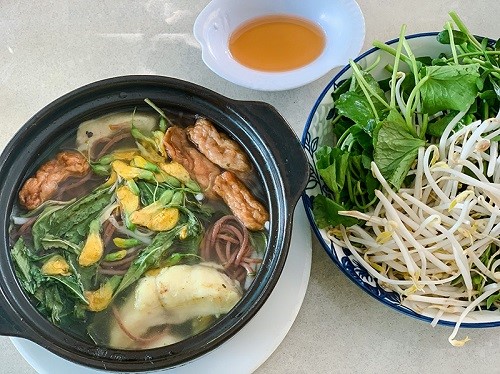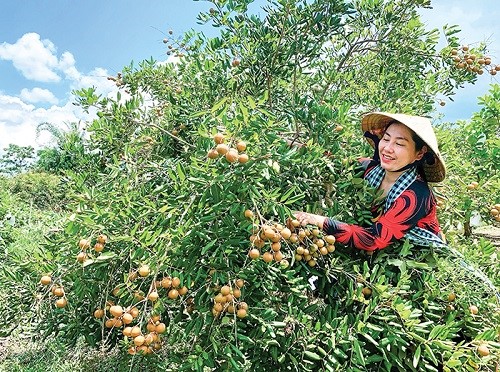
Visit Islets full of fruit trees
Islets are floating lands in the middle of the river, covered with alluvium all year round, suitable for growing many types of fruit trees such as guava, green-skinned grapefruit, star apple, rambutan, longan, water apple, and mango. Son Islet (Binh Thuy district) is a popular destination near the city center, loved for its green space of gardens. With an area of about 75 hectares, Son Islet has many fruit orchards to serve tourists all year round, especially during the summer when the fruit is ripe. Mr. Nguyen Thanh Tam, owner of Thanh Tam Garden, offers shows with snakehead fish and catfish. Additionally, there are guava and longan gardens. Guava bears fruit all year round, allowing visitors to enjoy the fruit on-site. As for longan, there are 2 crops a year, with the main crop from May to July. In the summer, there is a high demand for fruit, often exceeding the garden's supply.
At Son Islet, gardeners also cultivate many varieties of longan. Depending on the season, visitors will be able to visit the longan garden. Summer is the time when rambutans are ripe. At Son Islet, the rambutan gardens are all 40-50 years old. Nam Phuoc (Phan Thi Kim Phuoc), owner of Song Khanh Garden, said: “Here we work with each other. For example, rambutans ripen in only about 2-3 weeks, so households with rambutan gardens like my house, Mr. Tam's house, or Mr. Ba Binh's house will make some adjustments to make our rambutan gardens ripen longer. Mr. Ba Binh's garden usually has fruits ripening early in May and June, so he welcomes guests first, then goes to Mr. Tam's garden, and my garden last.” Other households at Son Islet also use this technique with longan gardens, water apple gardens, and Burmese grape gardens. Applying this technique, gardeners do not have to worry about the source of customers while visitors can enjoy fresh fruit in the right season.
Tan Loc islet, located more than 50km from the city center in Thot Not district, is known as the “sweet island” of Can Tho. This area is abundant with delicious fruits such as mangoes, water apples, rambutans, and guavas. The fruit trees are grown in agricultural greenhouses, and the fruits are covered with cloth bags. This method ensures that the fruits are not only clean and safe but also fragrant and characteristically sweet.
Visitors to the islet can explore gardens belonging to gardeners. Le Hong Diep, owner of Hong Diep Guava Garden, stated that the guavas she cultivates using natural methods are crispy and sweet, much to the delight of the customers. However, there is a shortage of guavas for sale, especially during the summer. To diversify the garden's produce, she has also started intercropping purple longan and golden star apple.
Visit the fruit land of Phong Dien
In Can Tho, there are 24,500 hectares of fruit trees, with Phong Dien alone having nearly 9,000 hectares, which accounts for 1/3 of the total area planted with fruit trees. This region is known for the Ha Chau Burmese grape, with four types of Burmese grapes being grown here: langsat, Gia bao Burmese grape, Ha Chau Burmese grape, and Siamese Burmese grape. Each type has a distinct flavor, but the most famous one is the Ha Chau Burmese grape, which is considered a specialty of Phong Dien due to its sweet and fragrant taste, making it popular with tourists. Strawberries start bearing fruit around April and continue until September. As the rainy season begins in May, the strawberries ripen and the fruit becomes shiny. Strawberry gardens are concentrated in Phong Dien town, Nhon Nghia commune, Nhon Ai commune, and My Khanh commune, including gardens such as Ba Thai, Vam Xang, Giao Duong, Tuan Tuong, 9 Hong, and Ut Dzach. Tourists visiting these gardens can take sparkling photos, pick Burmese grapes, and enjoy fresh fruit on the spot.

Burmese grape garden at My Khanh Tourist Village.
It's easy to find fruit gardens in Phong Dien. In addition to Burmese grape gardens, there are also many mangosteen, longan, and durian gardens that attract tourists. For example, the fruit gardens in Lung Cot Cau tourist area are famous for their mangosteen and durian. Meanwhile, at Can Tho Eco Resort or My Khanh Tourist Village, you can find diverse fruit gardens with large areas, such as jackfruit, Burmese grape, rambutan, and longan.
The hot summer weather is a perfect time for visitors to enjoy the cool, relaxing, and comfortable gardens with their fresh, green space and fruit-laden branches. Visiting the gardens on the islets floating in the middle of the river makes the journey even more interesting. The busiest fruit season is from June to August, but this year, due to erratic weather, many orchards are slow to bear fruit. However, the green space of the gardens and rustic dishes are still suitable choices during the hot season.
Source: Cantho News - Translated by Hoang Dat







